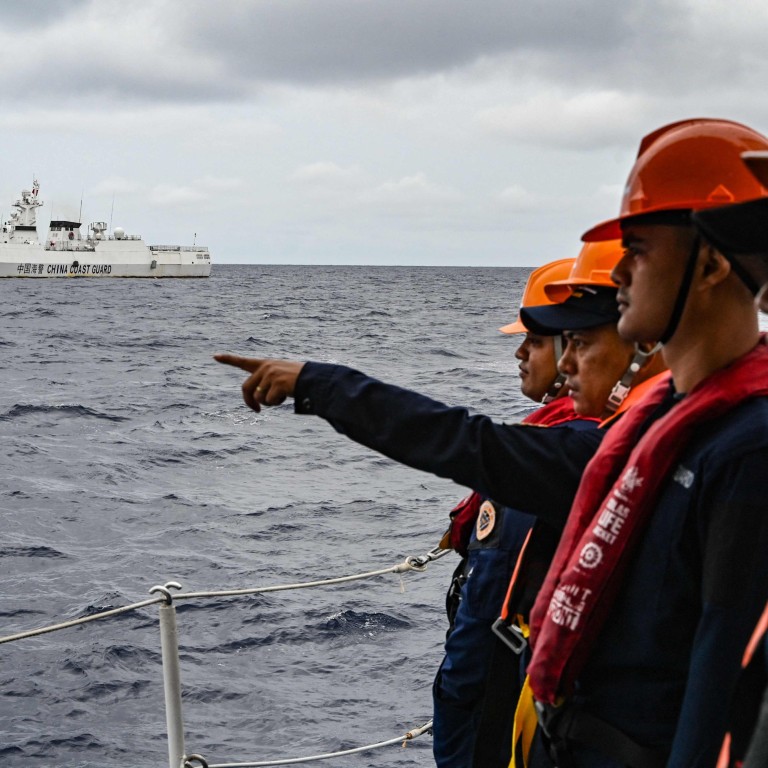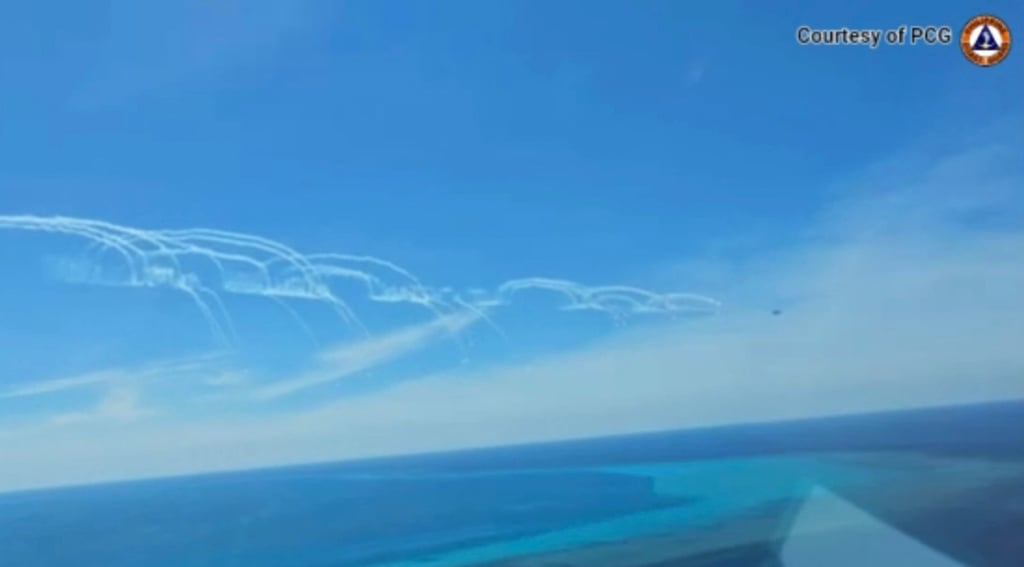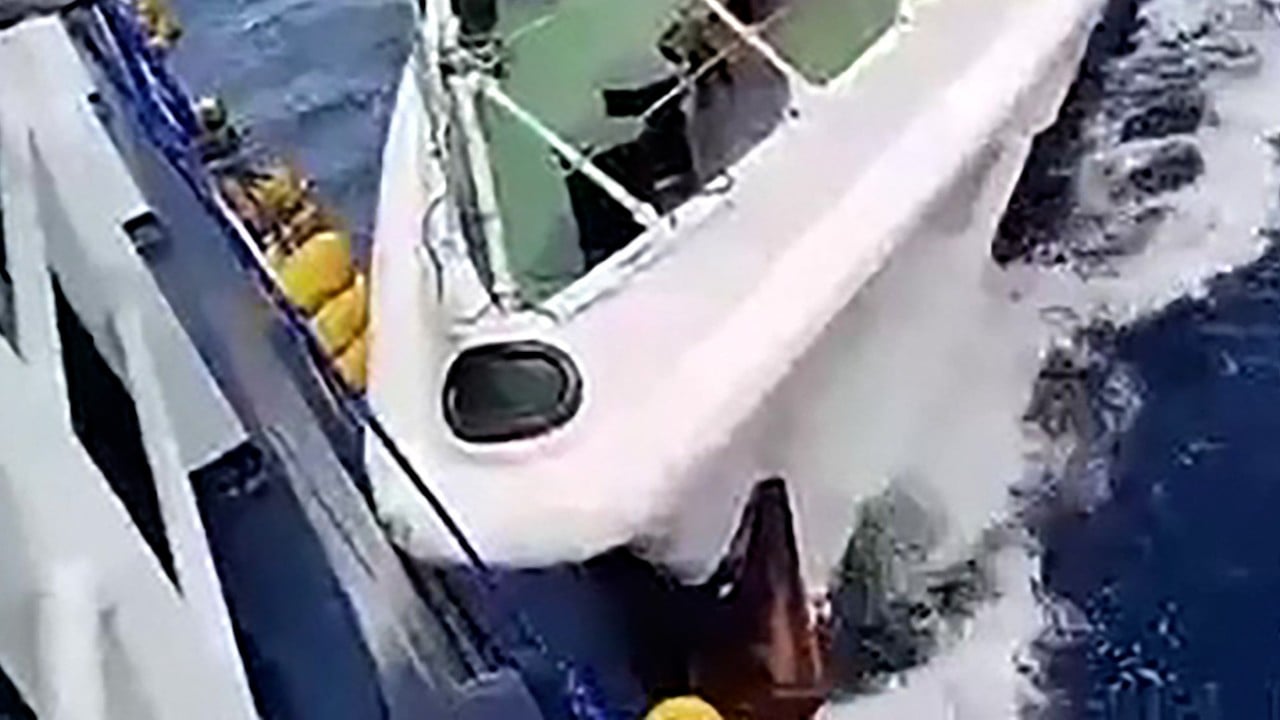
South China Sea powder keg: trio of China-Philippines clashes in 5 days stokes alarm
- Manila has accused Beijing of deliberate intimidation and harassment, stoking fears of a broader crisis erupting in the South China Sea
The latest occurred on Monday, when Manila says 40 Chinese vessels, including six coastguard craft and three navy ships, blocked two Philippine coastguard patrol boats from completing a “lawful humanitarian operation”.
The vessels were en route to deliver supplies, including an ice cream treat to celebrate National Heroes Day, to a Philippine coastguard ship on patrol at Sabina Shoal. But according to coastguard spokesman Jay Tarriela, China’s “excessive use of force” prevented them from carrying out the routine mission.
It was the third such confrontation in five days. On Sunday, Philippine officials reported that at least eight Chinese coastguard ships had swarmed and blocked a Philippine fisheries enforcement vessel, the BRP Datu Sanday, as it sailed from Half Moon Shoal to Sabina Shoal to provide food and fuel to Filipino fishermen.
The Chinese ships blasted the small patrol boat with water cannons, disabling its engines, and reportedly rammed it – all while journalists on board captured the aggression on video.
On Monday, Manila’s National Task Force on the West Philippine Sea called the Chinese actions “unprofessional, aggressive and illegal”, categorically rejecting Beijing’s claims that Filipino personnel had fallen into the sea and been rescued by the Chinese coastguard as “completely unfounded” and “misinformation”.
“The Philippines has never provoked the People’s Republic of China, which in turn has relied on deliberate and international harassment and intimidation,” the task force said. Earlier, the National Maritime Council urged China to halt all provocations, stressing on Sunday that the disputed shoals are well within the Philippines’ exclusive economic zone.
Philippines-based non-governmental group the Atin Ito (This is Ours) Coalition denounced the attack on the BRP Datu Sanday as “despicable” and said “China’s blatant disregard for international law is appalling”.

The Philippine task force said in a statement that a Chinese fighter jet had deployed flares multiple times at the BFAR plane on August 19, coming as close as 15 meters in a “dangerously close” manoeuvre that “jeopardised the safety of the personnel on board.”
It stressed that the Chinese jet “was not provoked”, in a clear rebuke of any attempts by Beijing to justify the action, and called on China “to immediately cease all provocative and dangerous actions that threaten the safety of Philippine vessels and aircraft engaged in legitimate and regular activities” within the country’s territory and exclusive economic zone.
This was not an isolated incident. Two Chinese air force planes also reportedly dropped flares on August 8 near a Philippine military aircraft patrolling over Scarborough Shoal, an area that China has blockaded to keep out Filipino fishermen.
“China’s flares from Subi Reef were intended to warn the Philippine aircraft away from their military base,” said retired US Air Force colonel Raymond Powell, director of Stanford University’s SeaLight Project and an expert on the region.
He expressed particular concern about the Scarborough Shoal incident, describing it as “an aerial intercept” where “the flares came much closer to the Philippine aircraft”.

Defence chief Gilberto Teodoro acknowledged on Monday the need to “be ready to anticipate, to get used to these kinds of acts from China”, even as he admitted the government has repeatedly condemned them as “illegal” to no avail.
“We have repeatedly said this many times that this is illegal, but they don’t care,” he told reporters, not elaborating on what the government would do beyond filing diplomatic protests.
He also declined to speculate on what scenario would trigger support from the US under the terms of their 1951 Mutual Defence Treaty.
“That is putting the cart before the horse,” he said. “Let us deter an armed attack. That is the more important thing. That is what I’m focused on doing … Let’s make ourselves strong enough so that does not happen.”
Beijing has steadfastly refused to recognise that decision, leaving the Philippines with limited options to enforce it.
As the war of words and risky military manoeuvres continue, the need for effective deterrence and conflict prevention has never been more pressing. But with China’s growing regional influence and the Philippines’ military disadvantage, the path forward remains fraught with uncertainty and the potential for miscalculation.


